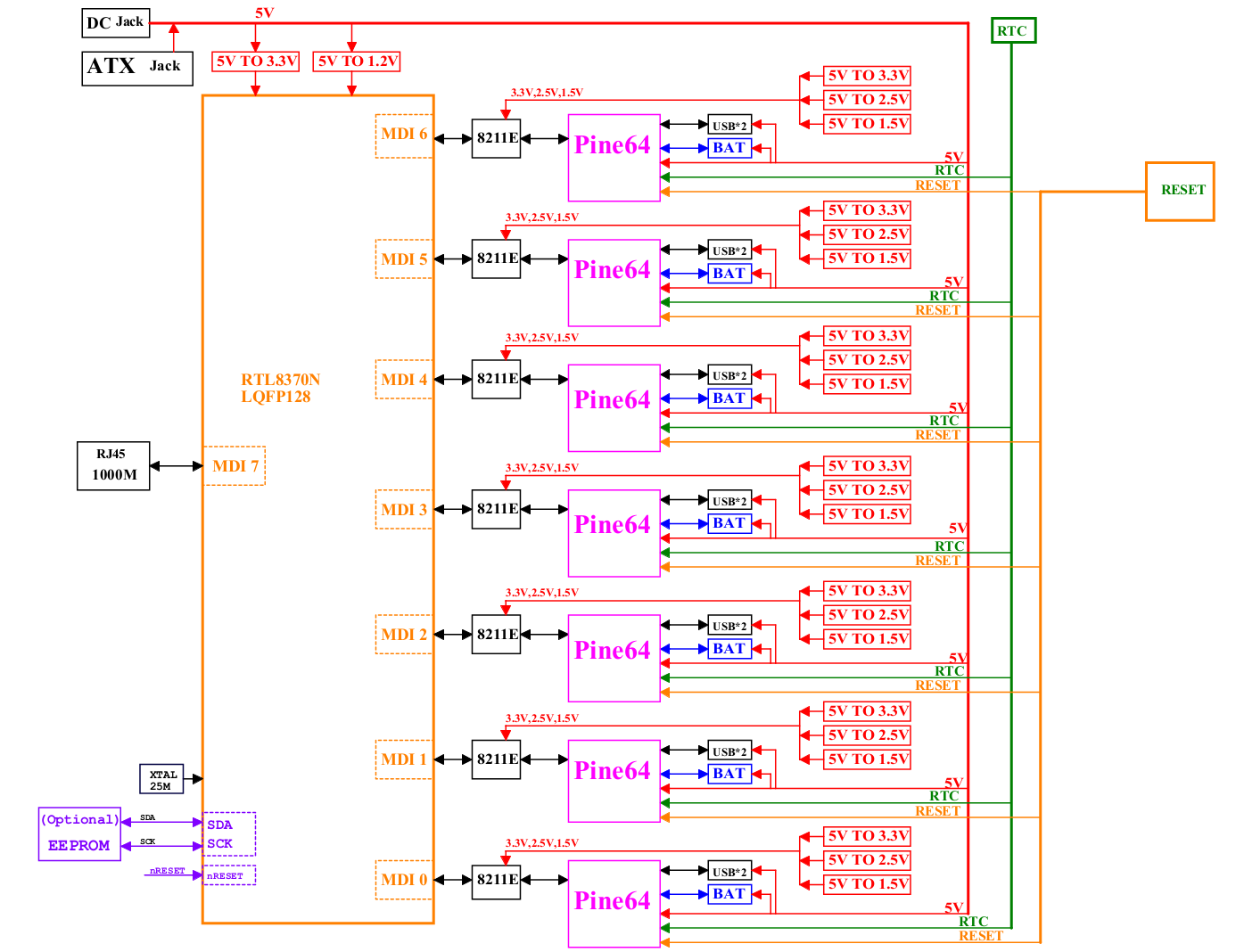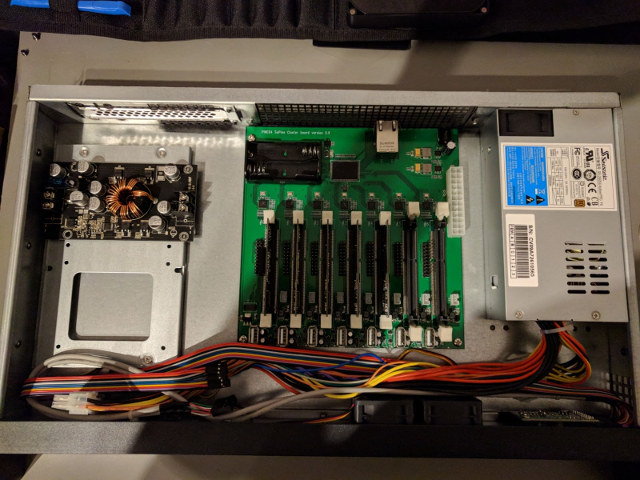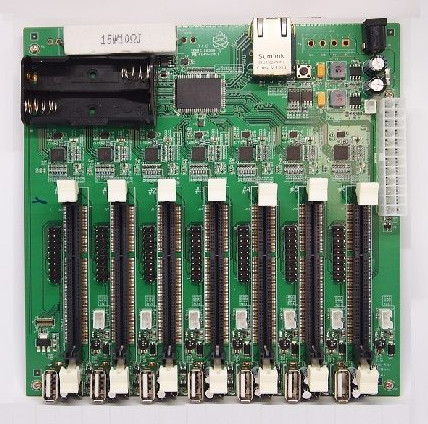We’ve previously reported Pine64 had developed “Sopine Clusterboard” for a specific project with support for up to seven SOPINE A64 SoMs powered by Allwinner A64 quad core Cortex A53 processor.
At the time (August 2017), it was unclear whether the company would sell to the solution publicly, but they’ve now gone ahead and launched Pine64 ClusterBoard for $99.99 plus shipping, including one free SOPINE A64 module for a limited time.
PINE64 ClusterBoard specifications:
- SoM Slots – 7x SO-DIMM slot for SOPINE A64 modules
- Connectivity
- 1x Gigabit Ethernet port (RJ45)
- All SoMs are connected via Gigabit Ethernet using 7x RTL8211E transceivers and RTL8370N network switch (See diagram below)
- USB – 7x USB 2.0 port, one per SoM
- Expansion – Headers for each SoM with UART (serial console), I2C, key ADC, GPIOs, SPI, RESET/POWER 5V and GND
- Misc – RTC, reset button, optional EEPROM connected to RTL8370N
- Power Supply
- 5V/15A via power barrel jack
- ATX connector
- 2x battery slot for RTC battery backup, and buffer the AXP803 PMICs in deep suspend
- Dimensions – 170 x 170 mm (mini-ITX form factor)

You’ll find software for SOPINE A64 module, as well as the hardware design files (PDF and native) on SOPine Wiki. You’ll also want to purchase extra SOPINE A64 SoMs ($29) and a power supply ($15.99) on Pine64 store to have a complete system.


Jean-Luc started CNX Software in 2010 as a part-time endeavor, before quitting his job as a software engineering manager, and starting to write daily news, and reviews full time later in 2011.
Support CNX Software! Donate via cryptocurrencies, become a Patron on Patreon, or purchase goods on Amazon or Aliexpress





